LG QNED87T is a television that definitely stands out. It is somewhat unconventional – it doesn’t forcefully compete with top OLED models, but it makes up for that with modern features and user-friendly operation. This is a device that works wonderfully for those who value convenience and versatility. The 120 Hz panel, VRR, and ALLM ensure that the television handles dynamic content well. Games run smoothly, the picture is sharp, and the responses are quick. If we spend time on a console, we will appreciate the lack of delays or blurring. When watching sports, fast actions are clear, without stuttering. On a daily basis, LG QNED87T is simply comfortable. WebOS operates intuitively, applications launch quickly, and the Magic Remote significantly simplifies control. Voice control saves time, especially when searching for films or series. Features such as USB recording and Bluetooth offer more options, increasing its versatility. The IPS panel is a significant advantage when it comes to viewing angles. Regardless of where we sit in the room, the picture looks good. It’s an excellent solution in larger spaces, where not everyone has a direct view of the screen. Older films or standard television from built-in tuners also look decent – the improvement in the quality of lower resolution materials works surprisingly well. However, there are certain things that may stand out. The contrast is simply tragic. In dark scenes, there are no details at all. In the evening, in a dimmed room, this is very noticeable. During the day, these imperfections are less felt, so LG QNED87T is better suited for well-lit places. LG QNED87T is a television that has its strengths. It handles dynamic materials well, is comfortable to use, and is perfect for bright rooms. It is not an ideal model for evening screenings in darkness, but in everyday use, it certainly stands out. It is a versatile device that is worth considering when choosing a new television.
- Matching (Score)
- Our verdict
- TV appearance
- Where to buy
- Contrast and black detail
- HDR effect quality
- Factory color reproduction
- Color reproduction after calibration
- Smoothness of tonal transitions
- Image scaling and smoothness of tonal transitions
- Blur and motion smoothness
- Console compatibility and gaming features
- Input lag
- Compatibility with PC
- Viewing angles
- TV efficiency during daytime
- Details about the matrix
- TV features
- Apps
- Playing files from USB
- Sound
LG QNED87T6B vs XIAOMI A PRO 2026
Direct compare

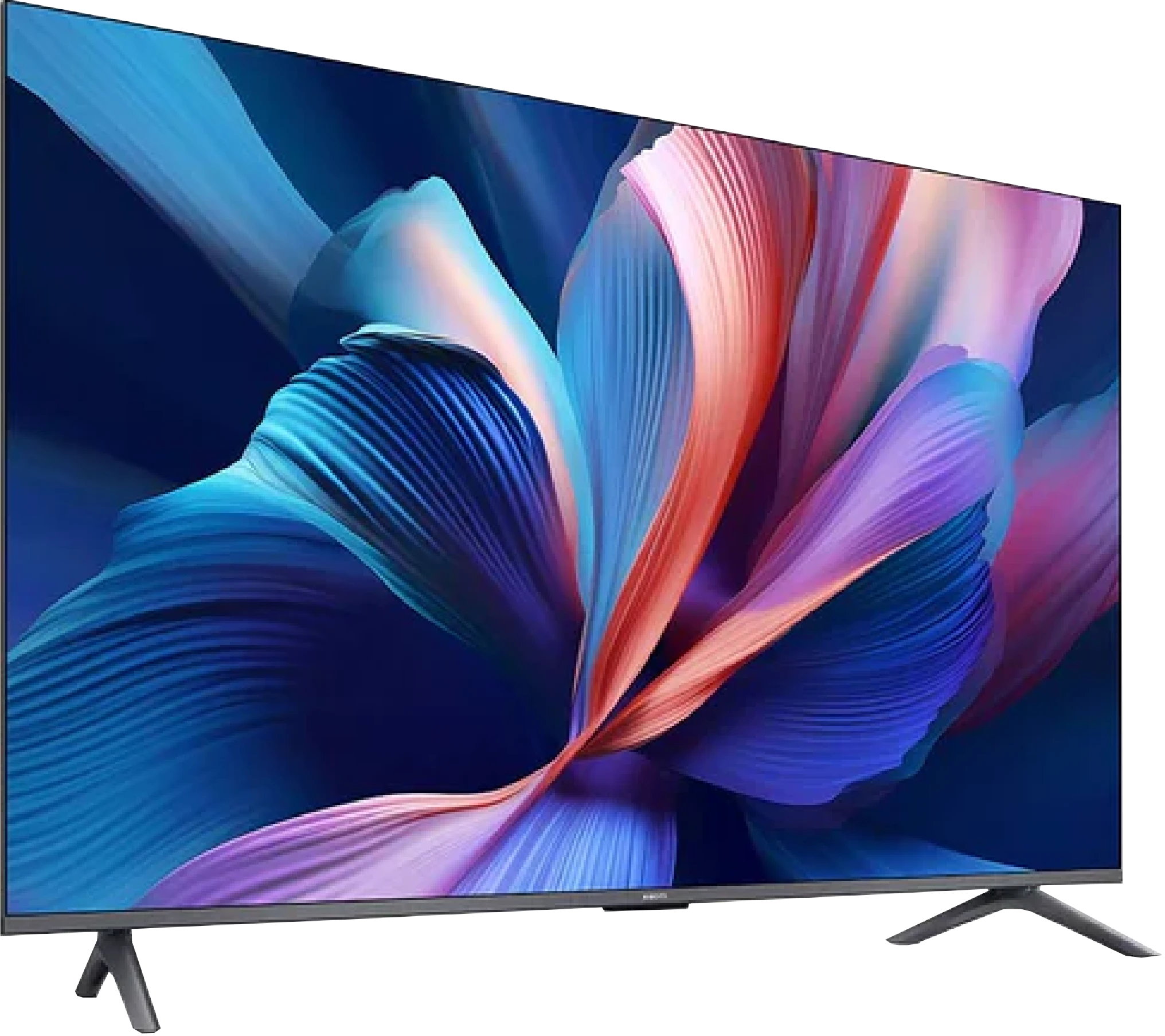
Panel type: LCD IPS
Resolution: 3840x2160
System: WebOS
Model year: 2024
Complete the survey to find out the result

Panel type: LCD VA
Resolution: 3840x2160
System: Google TV
Model year: 2025
Complete the survey to find out the result

Overall rating
6.8
5.6
Movies and series in UHD quality
6.1
6.0
Classic TV, YouTube
6.1
5.7
Sports broadcasts (TV and apps)
7.2
4.7
Gaming on console
8.2
6.2
TV as a computer monitor
7.6
2.0
Watching in bright light
4.8
4.9
Utility functions
8.8
6.1
Apps
8.3
9.6
Sound quality
6.0
5.0
Complete the survey to find out what fits your preferences
Advantages
Wonderful for gamers and sports - 120hz, HDMI 2.1
Wide viewing angles
Good choice for regular television - excellent digital processing and advanced user features
One of the better choices as a PC monitor
Remote control with cursor - Magic
VA matrix with good native contrast and decent blacks
Support for Game Boost mode at 120 Hz in 1080p and 1440p
Low input lag in 120 Hz mode
Google TV – a vast selection of apps and services
Wide colour gamut coverage (approx. 94% DCI-P3)
Decent colours after SDR mode calibration
Support for popular audio formats (Dolby Atmos, DTS:X)
Large, clear remote with a numeric keypad – convenient for seniors
Disadvantages
Tragic contrast
Missing Dolby Vision, HDR 10+
Low brightness
No real support for HDR10+ and other more advanced HDR formats (e.g. Dolby Vision)
Significant limitations when working with PC – lack of chroma 4:4:4, strong dithering, poor font readability
Poor viewing angles (typical for VA)
Clunky construction, legs mounted in plastic with screws
Weird system issues – stuttering, errors with Miracast and sound switching
Upscaling and digital image processing are practically non-existent
Very weak sound, virtually no bass (we felt it performed worse than the "2025" model)
Our verdict
Xiaomi A Pro 2026 is a television that at first glance does not reveal significant changes compared to its predecessor. Someone might even think it is simply a copy of last year's model with a different label. And there is some truth to that, as the main new feature, or rather the only noticeable difference, is the 120 Hz mode at lower resolutions. Credit must be given to Xiaomi, as this addition really does make a difference – it is not a solution for professional gamers, but a nod towards those looking for a smoother image during casual gaming. This is where the A Pro 2026 can shine – with a simple yet clever idea that distinguishes it in the “super-budget” segment. Unfortunately, when we begin to look at the television more broadly, excitement quickly dwindles. Even though the year has changed on the calendar, most of the issues known from the A Pro 2025 have remained – the system can still experience strange stutters, and the occasional errors can be quite irritating. Additionally, there is a lack of any serious tools for digital image processing, which worked quite decently last year. As a result, there are many limitations in the design that the competition at a similar price point is already attempting to mask. In terms of picture quality, we will not deceive you either. A brightness level of 200–300 nits does not stand a chance against more demanding materials. Yes, with simpler streaming content, one can manage to watch something, but with high-budget productions, it is immediately evident why the television costs what it does. The impression of watching a flattened image stripped of details accompanies us almost every time. And here we get to the crux of the matter. The Xiaomi A Pro 2026 is a television for those who really require very little. As a daily screen for series, news, or YouTube – it works quite well, especially thanks to its operating system, which is GoogleTV. Also, if someone is looking for budget equipment and additionally would like a taste of smoother gameplay in games due to the 120 Hz mode, they may even be satisfied. But anyone expecting at least average picture quality, a stable system, and proper functionality will quickly notice that there are other budget models on the market that simply perform better.
TV appearance





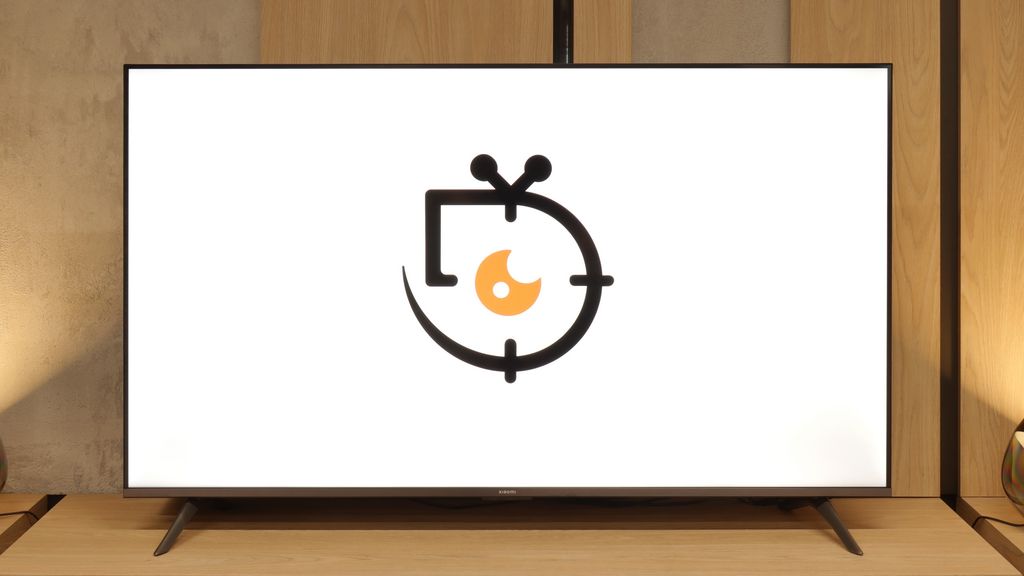
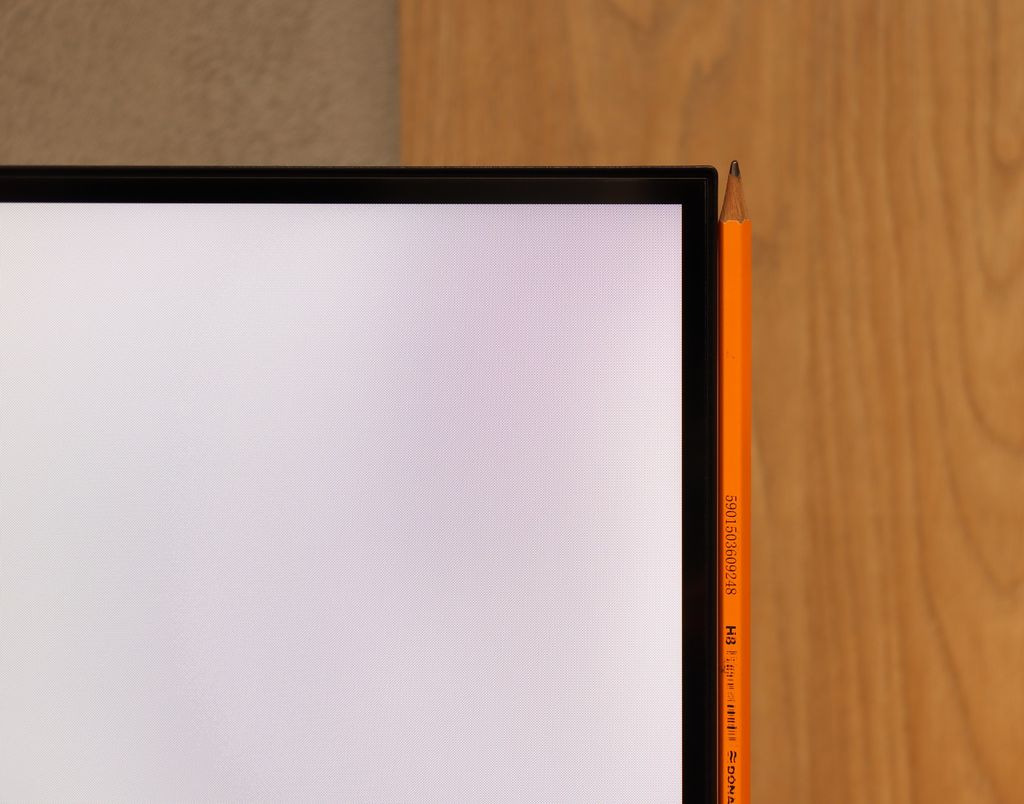
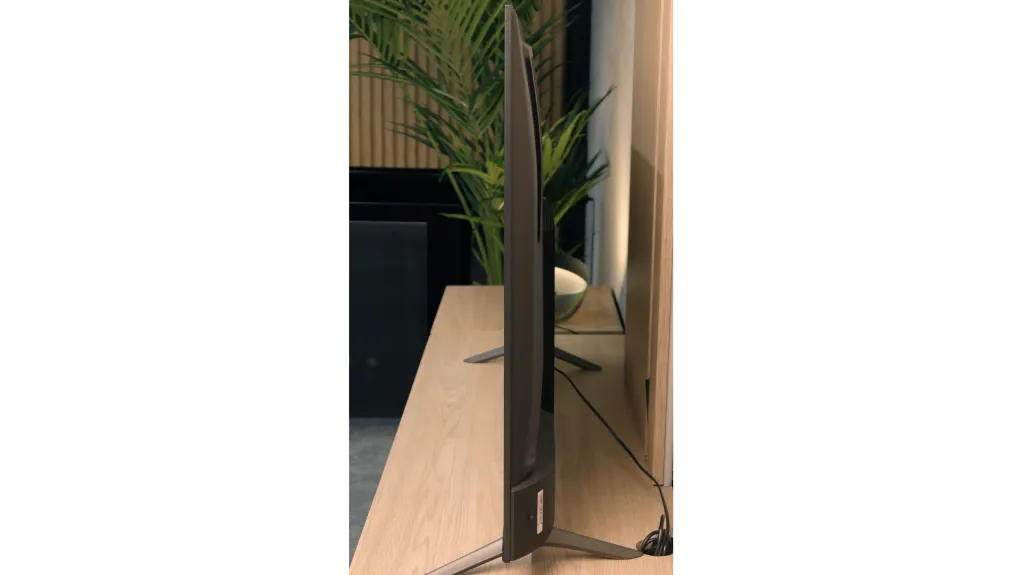
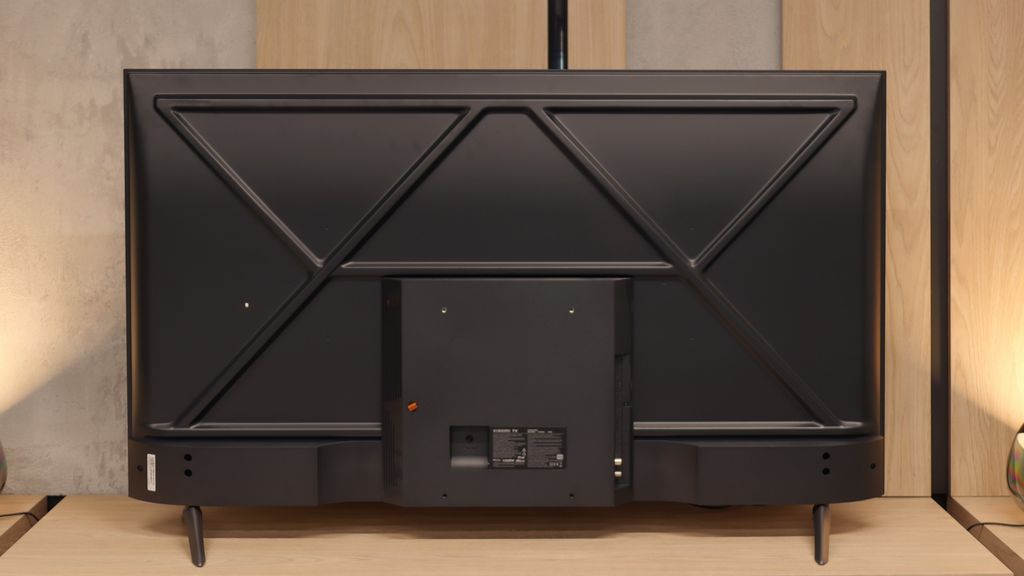
Contrast and black detail
3.3/10
6.1/10
Local dimming function: Yes, number of zones: 6 (6 x 1)
Local dimming function: No
Contrast:

Result
2,350:1

Result
1,250:1

Result
2,500:1

Result
1,450:1

Result
1,050:1

Result
5,000:1

Result
6,550:1

Result
7,300:1

Result
6,600:1

Result
4,900:1
Halo effect and black detail visibility:


In the category of black levels and contrast, the television LG QNED87T6B has certain challenges to overcome. Equipped with an IPS panel, it does not match models with VA panels in terms of performance in this area. Additionally, the edge-lit dimming affects its poor results in this category. It is worth mentioning that the exception here is the 50-inch variant, which has a VA panel, and is not subject to this test.
Although the manufacturer offers a dimming control option, the effects remain relatively weak. Test patterns show that the contrast is truly miserable, and in the test scene from the film "Sicario 2," it is clearly visible how the television struggles with uneven backlighting, illuminating a large portion of the screen from below. This demonstrates that in more demanding scenes, the television has difficulties maintaining an appropriate level of contrast and black levels, which negatively impacts the overall visual experience.
One of the biggest advantages of even a budget model like the Xiaomi A Pro 2026 is the use of a VA panel. It is responsible for quite a decent contrast, which in our measurements oscillated around 5000:1 – 7000:1. On the screen, this translates to a stable image with a fairly deep black – something that is difficult to find in competitive models with an IPS panel without local dimming. Xiaomi has also added a feature for global dimming of the entire panel. It sounds good, but… we advise you to turn it off immediately. Why? Because the screen begins to behave very strangely in darker scenes – sometimes it dims so much that practically nothing is visible, while at other times it brightens so much that the already dark blue black turns into a bright blue. At that moment, we felt as if the television was simply damaged. Fortunately, without this feature, the contrast looks really solid. It is definitely not on the level of advanced televisions with local dimming, but in its price range, it will comfortably satisfy most users – especially if you are not watching in a completely dark room, but have at least a little light in the background, which effectively masks the imperfections of the "blue black".
HDR effect quality
5.3/10
4.1/10
Luminance measurements in HDR:

Result
409 nit

Result
486 nit

Result
574 nit

Result
464 nit

Result
439 nit

Result
220 nit

Result
248 nit

Result
322 nit

Result
315 nit

Result
326 nit
Scene from the movie “Pan” (about 2800 nits)


Scene from the movie “Billy Lynn” (about 1100 nits)


Static HDR10


HDR luminance chart:
XIAOMI A PRO 2026
HDR luminance
LG QNED87T6B
HDR luminance
LG QNED87T6B delivers truly decent visual experiences when it comes to HDR. During our tests on test patterns, the television achieved brightness close to 500 nits, which is a satisfactory result and allows for good visibility of details in high dynamic scenes. Support for basic HDR formats, such as HDR10 and HLG, ensures appropriate image quality. Unfortunately, the television does not support more advanced standards, such as Dolby Vision or HDR10+, which are particularly important at this screen brightness. The lack of support for dynamic metadata means that in certain scenes, the television may struggle to fully reproduce details, especially in very bright areas – precisely when dynamic metadata could significantly improve image quality. Nevertheless, it is worth noting the excellent coverage of the wide DCI-P3 colour gamut, reaching as high as 96.4%. This ensures that the colours displayed by the QNED87T6B model are more vibrant and natural, enhancing the quality of 4K content with a wide colour palette.
If you are hoping for a cinema-grade HDR effect in the new Xiaomi A Pro 2026, you better cool your expectations quickly. This television is simply too dim to fully showcase the capabilities of contemporary films or series designed for the highest image quality. Our measurements showed brightness in the range of 200–300 nits, which is more akin to SDR content than ambitious HDR productions. In practice, this means that while most films may look fine, they certainly won't evoke that "wow" effect that other televisions are known for. Fortunately, not everything is lost – we must credit the PFS LED filter used here, which is a solution similar to the quantum dot technology found in QLEDs. Thanks to this, the coverage of the DCI-P3 colour palette reaches about 94%, resulting in vibrant, saturated colours in the vast majority of materials.
Factory color reproduction
5.4/10
3.5/10


Factory Mode
After calibration


Factory Mode
After calibration
The colour reproduction in the LG QNED, even in Filmmaker Mode, which is the best factory setting, is not without flaws. The main issue is the white balance – we noticed that the level of blue on the graph tends to decrease. This results in a shift towards yellow tones, making the image appear warmer than it should. This deviation affects the naturalness of colour reproduction, especially in scenes with a white or neutral background. The Color Checker test confirmed that some colours are distorted and deviate from reality. Such distortion can make cinematic scenes seem less realistic, and details are represented in incorrect colours, which negatively impacts the overall picture quality.
In terms of contrast, the analysis of the gamma graph revealed significant drops, while the optimal value should be 2.4. This means that the television may display darker parts of the image brighter in certain scenes, which reduces their depth and dynamism. Additionally, on the EOTF curve, which is responsible for brightness reproduction, an unnatural drop was noted at the beginning. This phenomenon may result in less accuracy in reproducing dark scenes, which in turn affects the overall picture quality. The television may not convey the full depth of black, causing more demanding scenes to lose realism and detail. As a result, viewers may notice that details in the darker areas of the image become less distinct.
What we saw in Filmmaker mode took us by surprise – and unfortunately not in a good way. The mode advertised as Hollywood standard resembled more of a shop window display. The white balance was shifted towards blue, leading to significant colour mistakes and burnt-out scenes in SDR content. It was slightly better, though still not perfect, in HDR materials. There were also issues there – the colour saturation and the entire palette consistently drifted towards cooler tones, resulting in an image that had more of an artificial, cold tint instead of a cinematic character. In other words: even in Filmmaker mode, which should showcase this television, we got an effect far from expectations.
Color reproduction after calibration
7.8/10
7/10




After calibration, the colours in SDR content look very good. The improved white balance translates to natural and harmonious shades in various scenes. Thanks to the precise adjustment of the gamma, details in shadows and bright areas of the image are accurately reproduced. The television performs excellently in everyday use, offering vivid, well-balanced images and solid colour quality in HD quality. The greatest beneficiary here is also the contrast. The gamma chart has been freed from very large errors, so here the television has gained a second face.
As for the white balance in 4K HDR, it has also been significantly improved. However, certain errors still appear at the end of the chart. This could be due to the overly aggressive operation of the television's local dimming, which affects the accurate reproduction of colour in certain scenes. It is difficult to speak here of an improvement in brightness represented by the EOTF curve. Due to its construction limitations, the television has certain disadvantages and we are not able to overcome them. The Color Checker test confirms the issue with colour saturation – despite the television offering a wide colour palette, it is not able to fully convey what the director intended.
Despite these shortcomings, the overall picture quality after calibration is significantly better than before. Improvements in white balance and gamma adjustment make images more vivid, and colours closer to reality.
Although Xiaomi is not a brand associated with top-tier televisions, it must be acknowledged that even in a budget model like the A Pro 2026, the manufacturer left plenty of calibration settings. After a few adjustments, the SDR image gained a completely new look. Colours stopped drifting towards blue tones, whites took on a more natural quality, and most errors dropped to a practically invisible level. As a result, SDR content looked very good, surprisingly so for this price range.
It was somewhat different with HDR materials. Here, it was immediately evident what we had already mentioned – clipping in bright scenes and issues with balance control. Calibration helped only partly, as the limitations of the panel itself played a role. However, it must be emphasized that for SDR, the television had transformed beyond recognition and in a decidedly positive direction.
Smoothness of tonal transitions
8.6/10
9.3/10












The gradation in LG QNED is quite good, despite minor issues on the colourful dark sky. These slight flaws do not detract from the fact that the gradation is one of the positive aspects of this model. Overall, the television performs well with smooth transitions of colours.
The television really handles colour blending well, and in most scenes, it's difficult to spot any imperfections. This is most evident in the bright segments of films, where tonal transitions look almost perfect; the image is then smooth and natural. Darker scenes present slightly worse, where characteristic banding can be noticed. Fortunately, this is not a flaw that stands out prominently, and for most viewers, it will remain practically unnoticed.
Image scaling and smoothness of tonal transitions
8/10
3/10
Smooth transition function


Image without overscan on the SD signal


When it comes to lower quality materials, the gradation looks really good. A feature called "Smooth Gradation" effectively smooths out the most problematic areas of the image without negatively affecting the film grain. For the best effect, it’s worth setting it to a low level. This solution significantly improves the quality of the displayed content and makes watching lower resolution materials more enjoyable and smoother.
In terms of digital processing, the image is displayed without cropping, known as overscanning. Although slight fringing of the branches against the model’s background can be noticed, the overall presentation is very good. Users should be satisfied with the image quality when watching low-quality materials, such as standard television. The television handles this task exceptionally well, providing a satisfying visual experience even with lower quality content.
Upscaling and digital image processing in the Xiaomi A Pro 2026 are not among the strengths of this model. One might expect that since the television was not designed to achieve record brightness levels, the manufacturer would focus on a more robust processor and a set of features that would "enhance" lower-quality images. Unfortunately – and here we are also faced with significant disappointment. On the positive side, we can note reasonably good upscaling, which handles HD materials and boosts them up to 4K in an acceptable manner. However, this is where the list of advantages ends. The television does not offer any features that improve tonal transitions or smooth out digital imperfections, so in most cases, we get a raw image, exactly as we deliver from an external source. On a large screen, such a lack of support makes lower-quality materials simply look bland. An additional problem is the phenomenon of overscan. When watching older materials, it happens that part of the image gets cut off, which only amplifies the impression that Xiaomi still has a lot of ground to make up in this category.
Blur and motion smoothness
7.8/10
4.5/10

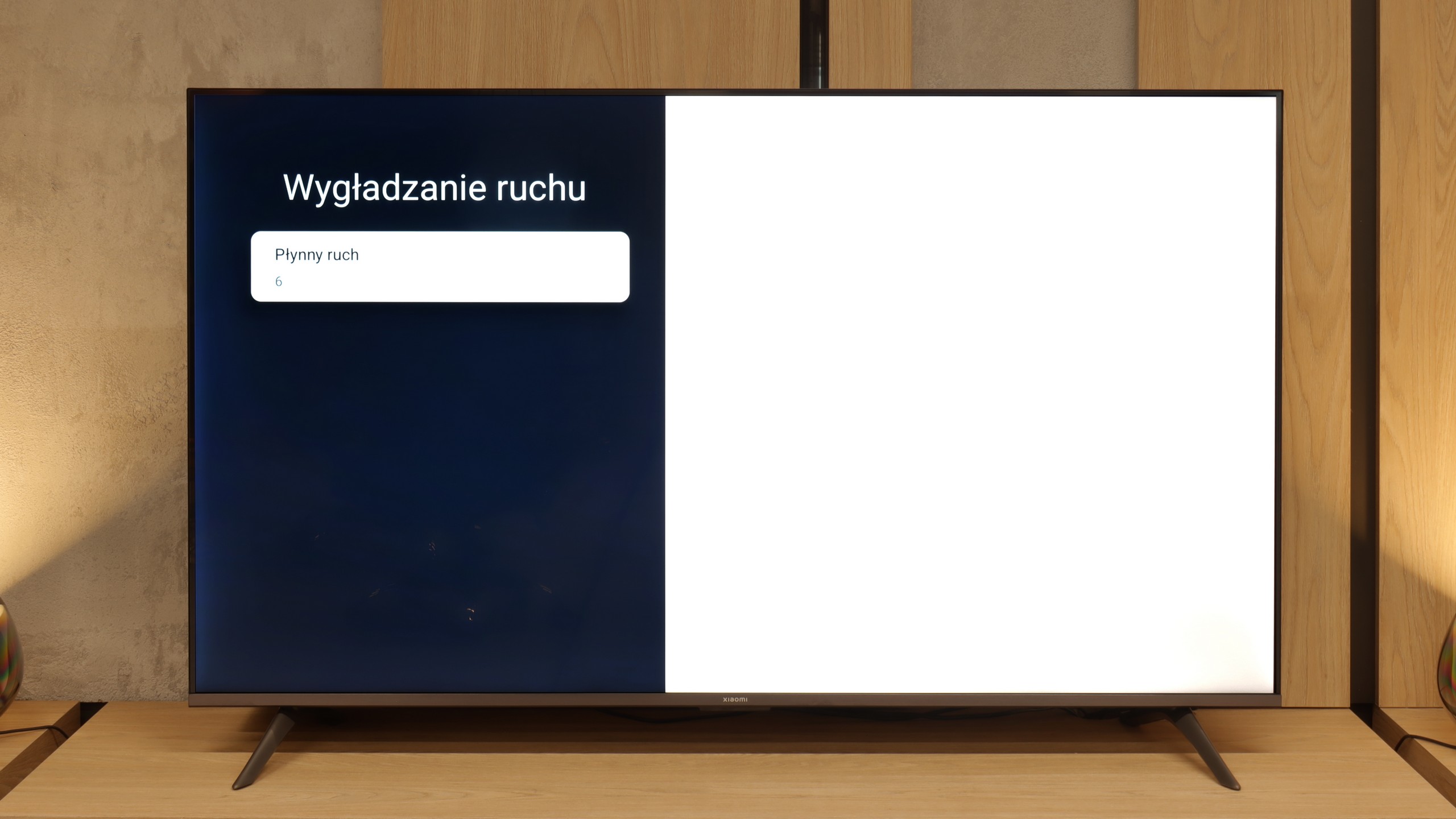
Blur (native resolution, maximum refresh rate):






Blur (BFI function enabled):






Smużenie ():
Smużenie (1440p@120Hz):



The television provides decent smoothness when watching films, thanks to the "Tru Motion" feature that allows for adjustment of the motion smoothing level on a scale from 0 to 10. De-Judder adjusts motion smoothness, while De-Blur regulates motion sharpness. The user has the option to choose between a traditional, cinematic effect with slight judder (lower settings) and a smoother, theatrical image. Although the latter slightly deviates from the cinematic standard, it may be appealing to many viewers.
As for gamers and sports fans, the LG QNED87 television with a 120Hz panel will certainly not disappoint them. And with the use of an IPS panel, the response time is generally better than that of VA panels available at a similar price. This guarantees smoother gameplay and dynamic experiences when watching sports events.
The fluidity of motion in the Xiaomi A Pro 2026 is an interesting compromise that arises from the hybrid matrix used here. At its native 4K resolution, the maximum refresh rate is 60 Hz – sufficient for those who mainly watch films and series. It is precisely with them in mind that the manufacturer has added a motion smoother, allowing users to adjust the image to their own preferences – opting for greater fluidity or leaving more "cinematic" frames depending on the settings.
Console compatibility and gaming features
9.2/10
3.6/10
- ALLM
- VRR
- VRR range48 - 120Hz
- Dolby Vision Game Mode
- Correct implementation of HGIG
- 1080p@120Hz
- 1440p@120Hz
- 4K@120Hz
- Game bar

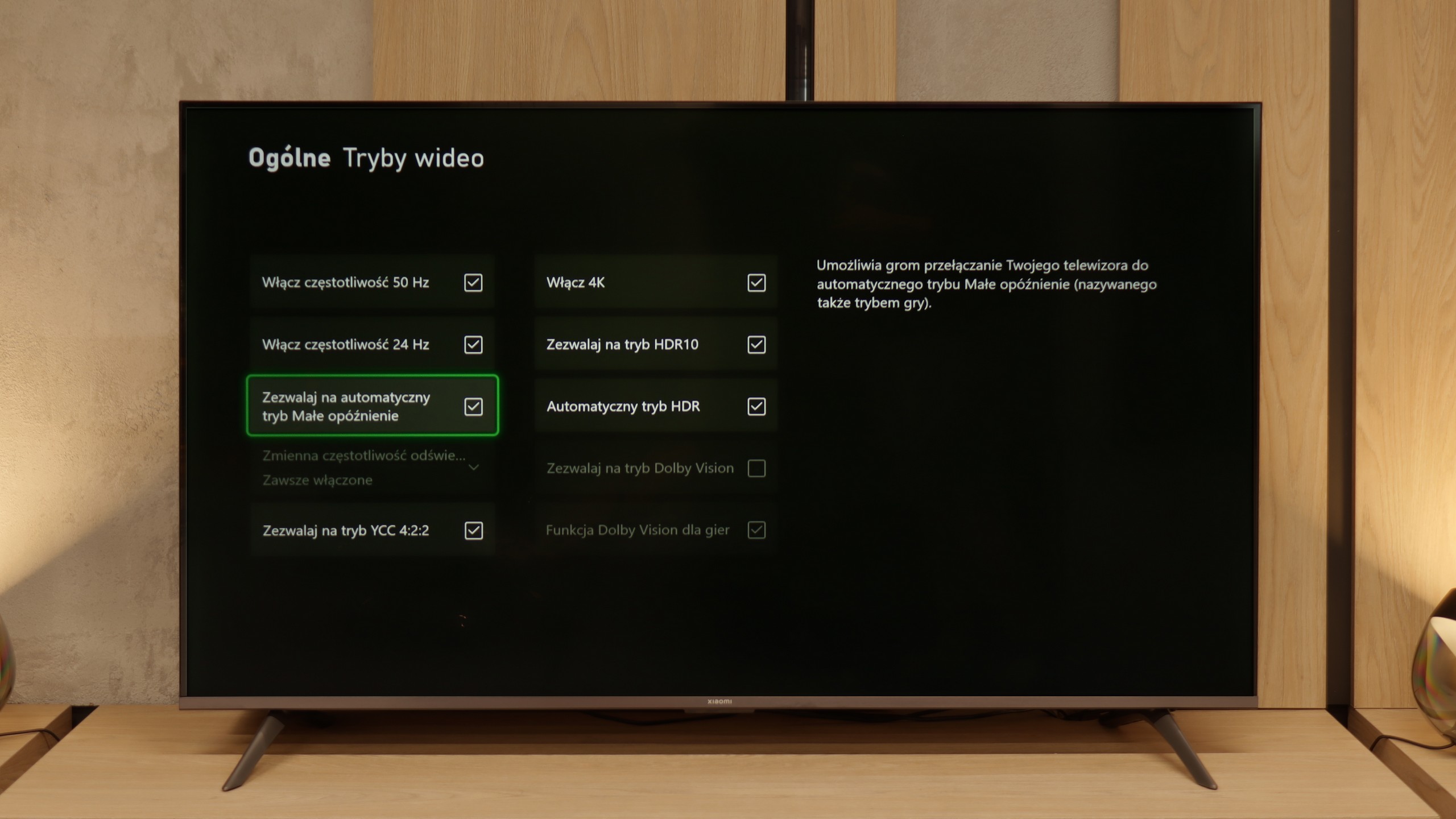

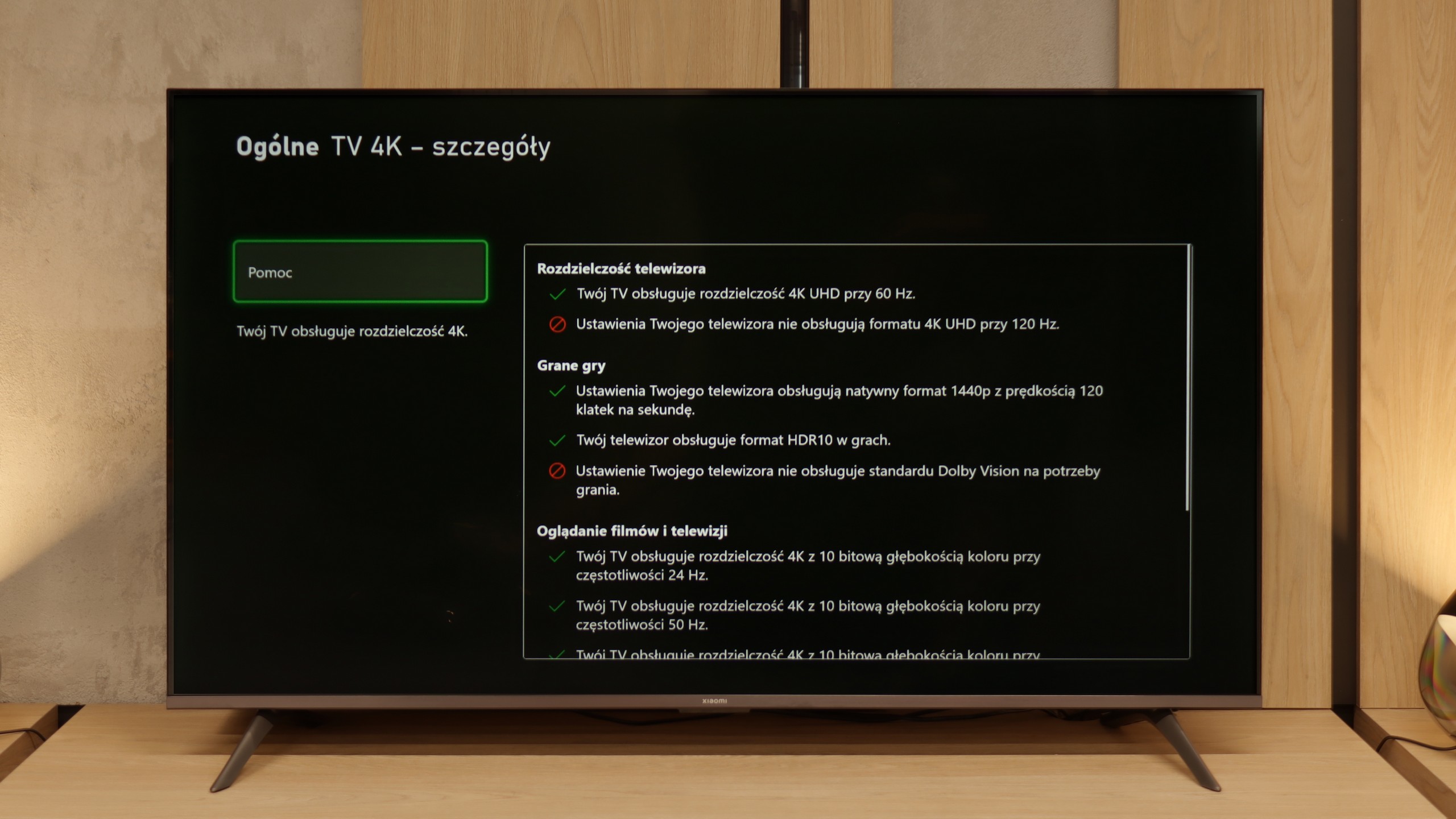

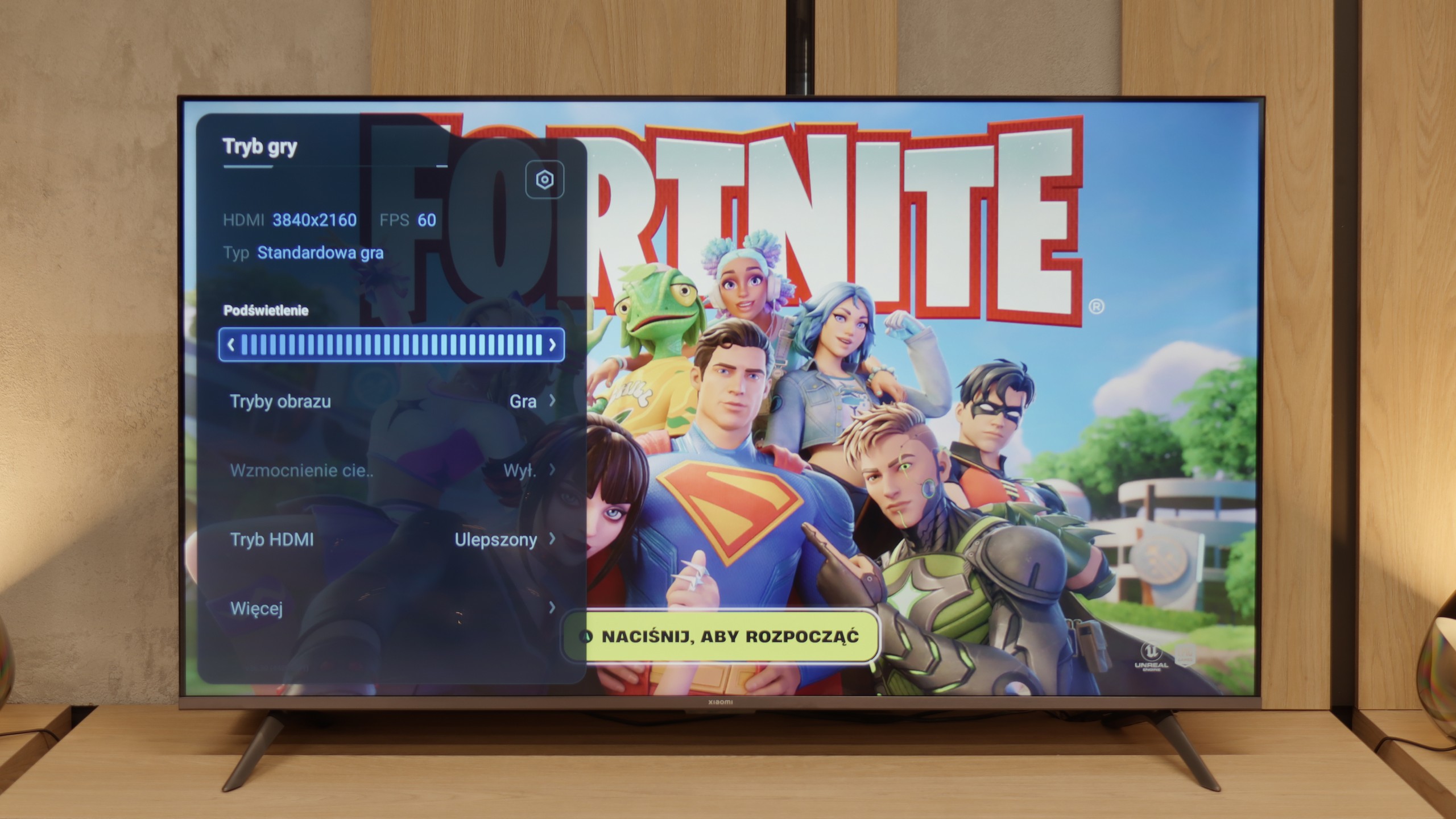

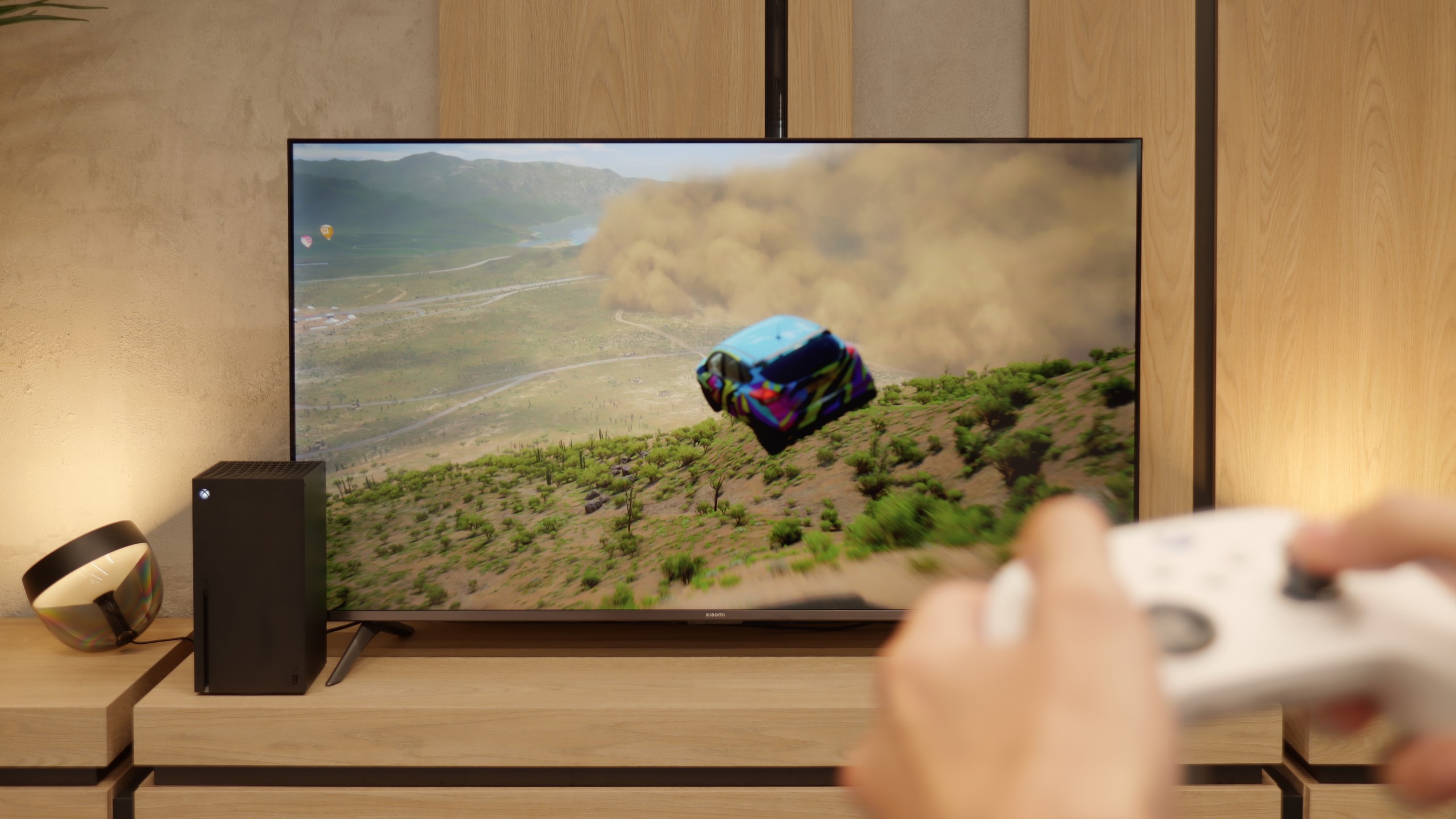
LG QNED offers a range of features that make it an excellent choice for gamers looking for a high-performance television. The television is equipped with four HDMI 2.1 ports, allowing for connection to the latest consoles, such as PlayStation 5 and Xbox Series X, and taking full advantage of features including Variable Refresh Rate (VRR) and Auto Low Latency Mode (ALLM). With the Game Bar feature, gamers can quickly and easily manage all their game settings without having to navigate through complicated menus. It is possible to adjust parameters such as VRR, ALLM, Multi View, and monitor frame rates. The television also supports G-Sync and FreeSync technologies, which is particularly important for owners of Nvidia and AMD graphics cards. G-Sync and FreeSync synchronise the television's refresh rate with the graphics card. The 120Hz panel ensures incredible motion smoothness and image clarity. Combined with the Black Frame Insertion (BFI) feature, available at 60Hz and 120Hz, gamers can enjoy an even clearer and smoother picture. LG QNED87 is a television that will meet the expectations of even the most demanding gamers, offering modern technologies and features that significantly enhance comfort and satisfaction in gaming.
Exactly – since Xiaomi has included the "Game Boost 120 Hz" feature, one might expect that they would follow up with a solid gaming package. Unfortunately, reality quickly dampens this enthusiasm. Aside from this mode (which, it must be admitted, is a great addition in a budget design), we only have a rather odd player panel. It's hard to call it a full-fledged "game bar" – it’s more of a simple overlay on the TV Menu with limited capabilities. And that would be about it. There’s a lack of ALLM, so the TV won’t automatically switch to game mode. There’s no VRR, so you can forget about smooth frame sync. We also won’t find support for Dolby Vision in games or the HGiG format, which are becoming increasingly standard on consoles. In short: besides the Game Boost 120 Hz, which actually allows for a more enjoyable experience at 1080p or 1440p, the Xiaomi A Pro 2026 offers nothing that could particularly attract gamers.
Input lag
9.9/10
9.5/10
SDR
HDR
Dolby Vision
LG QNED stands out with an extremely low input lag, which is crucial for smooth and responsive gameplay. For a refresh rate of 120Hz, input lag values do not exceed 6 ms, whereas at 60Hz, the input lag reaches a maximum of 15 ms. These are truly impressive results that ensure player reactions are almost instantly reflected on the screen.
The input lag on the Xiaomi A Pro 2026 is quite decent and definitely not its weak point. The best results were achieved in 1080p@120 Hz and 1440p@120 Hz modes – in those, the television goes below 10 ms, which can easily be described as an outstanding result, and more than sufficient even for the more demanding gamers. The situation changes with 60 Hz content – the input lag then rises to around 25 ms. While these may not be the best figures on the market, they are perfectly acceptable for casual gaming or firing up a console in the evening. Especially since in most cases, it's still worthwhile to enable the 120 Hz mode, which is the most advantageous for gamers.
Compatibility with PC
7.6/10
2/10

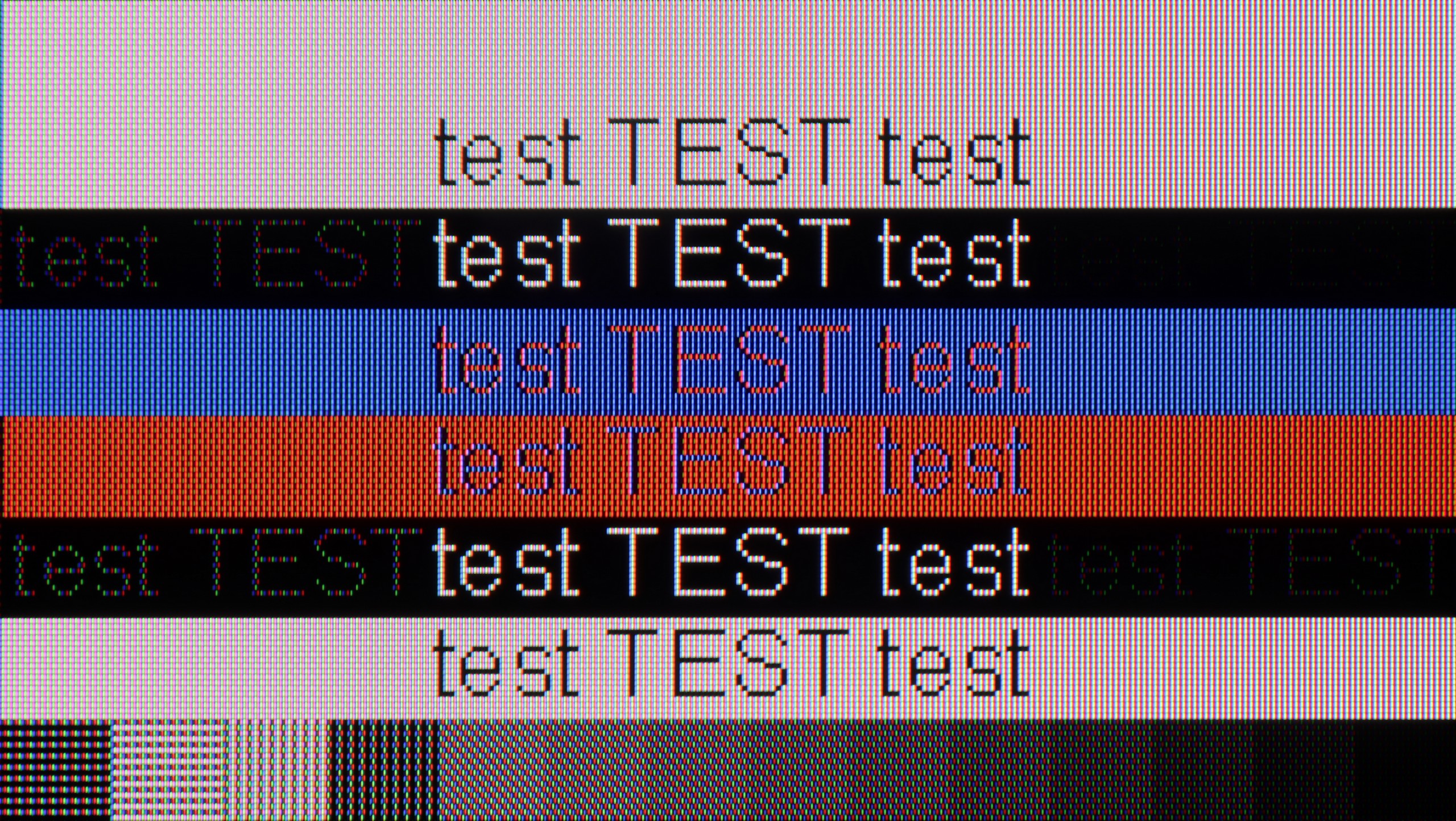
The LG QNED television works excellently with a computer, offering very good font readability. As a result, working and browsing content is exceptionally comfortable. The high refresh rate of 120Hz ensures a smooth and vivid image. It combines a large workspace with efficiency, making it a real pleasure to use. However, for more demanding users, the disappointing fact may be that the television has issues displaying fonts on a dark background. Instead of white letters, they take on a greenish hue.
Xiaomi A Pro 2026 as a computer monitor? There's no point beating around the bush – it's very bad. While the 120 Hz mode can still be used in games at lower resolutions, for daily work the television is completely unsuitable. There's a lack of full support for chroma 4:4:4, meaning fonts are blurred and sometimes even rainbow-like. Additionally, there's significant dithering, causing the image to appear uneven – some pixels shine brighter, others dimmer, and vertical lines can even break apart. In practice, this means that text (especially coloured and on a dark background) becomes hard to read. Light text manages to hold up somewhat, but it’s hard to talk about any comfort here. In this category, we give the Xiaomi A Pro 2026 a score of 2/10 (+1 for the additional high refresh rate mode), and there’s really no point in dwelling on this further.
Viewing angles
7.1/10
3/10
When it comes to viewing angles, LG QNED87 performs really well. Thanks to the use of an IPS panel, it offers wide viewing angles compared to VA panels. This means that the image remains clear and does not lose quality even at an angle. Although it may not achieve results as perfect as OLED televisions, which maintain colours and brightness regardless of the viewing angle, in the context of LCD QNED87 screens, it stands out positively. This makes it an excellent choice for larger rooms where viewers often watch from an angle.
Xiaomi A Pro 2026 uses a VA panel, which immediately suggests that viewing angles are not its strong suit. When looking at the screen from the side, we quickly notice a loss of quality – colours noticeably fade, and the whole image appears washed out. The drop in brightness may not be as drastic as in some constructions based on similar technology, but that does not change the fact that this is clearly a weak point of this model. If we plan to use it as a large, cheap screen for the living room, we need to reckon with this limitation.
TV efficiency during daytime
4.8/10
4.9/10

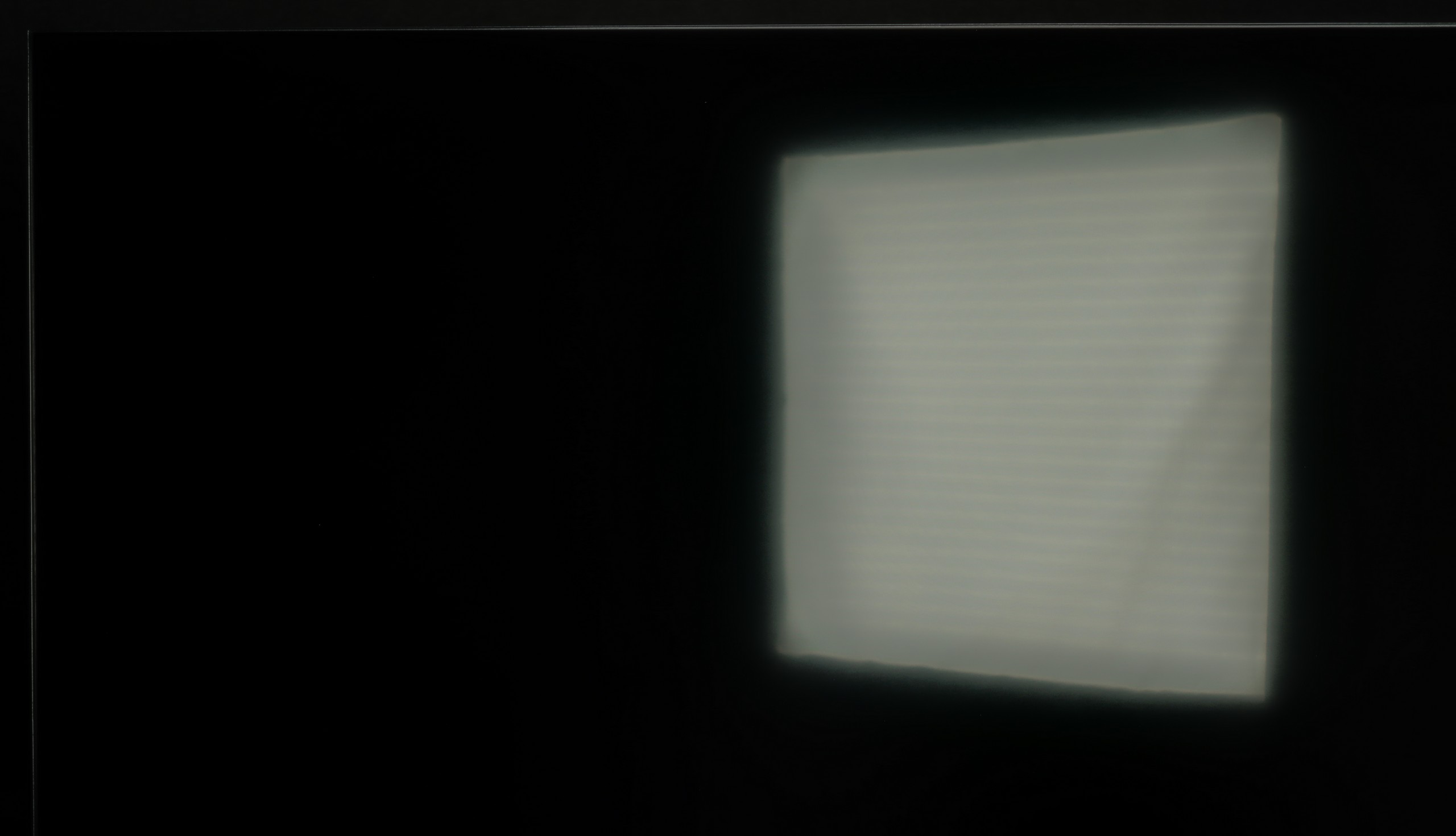


Matrix brightness
Average luminance SDR
XIAOMI A PRO 2026: 334 cd/m2
LG QNED87T6B: 428 cd/m2
During the day, the LG QNED television performs acceptably. It has a satin finish panel that doesn't suppress reflections very well, which can be noticeable in bright rooms. Nevertheless, thanks to quite good brightness of 430 nits, the picture remains visible and readable. Although reflections can be somewhat distracting, the television's brightness allows for comfortable use during the day.
Xiaomi A Pro 2026 performs quite well during the day. The display has a satin coating that manages to dull reflections somewhat, so the colours do not lose their vibrancy, even when the room is bright. Just remember that it is not an extremely bright screen – the average brightness is around 350 nits. In a typical, moderately sunlit living room, it is sufficient, but if you have large windows and plenty of sunshine coming in, it might simply be difficult without blinds or curtains.
Details about the matrix
Subpixel Structure:

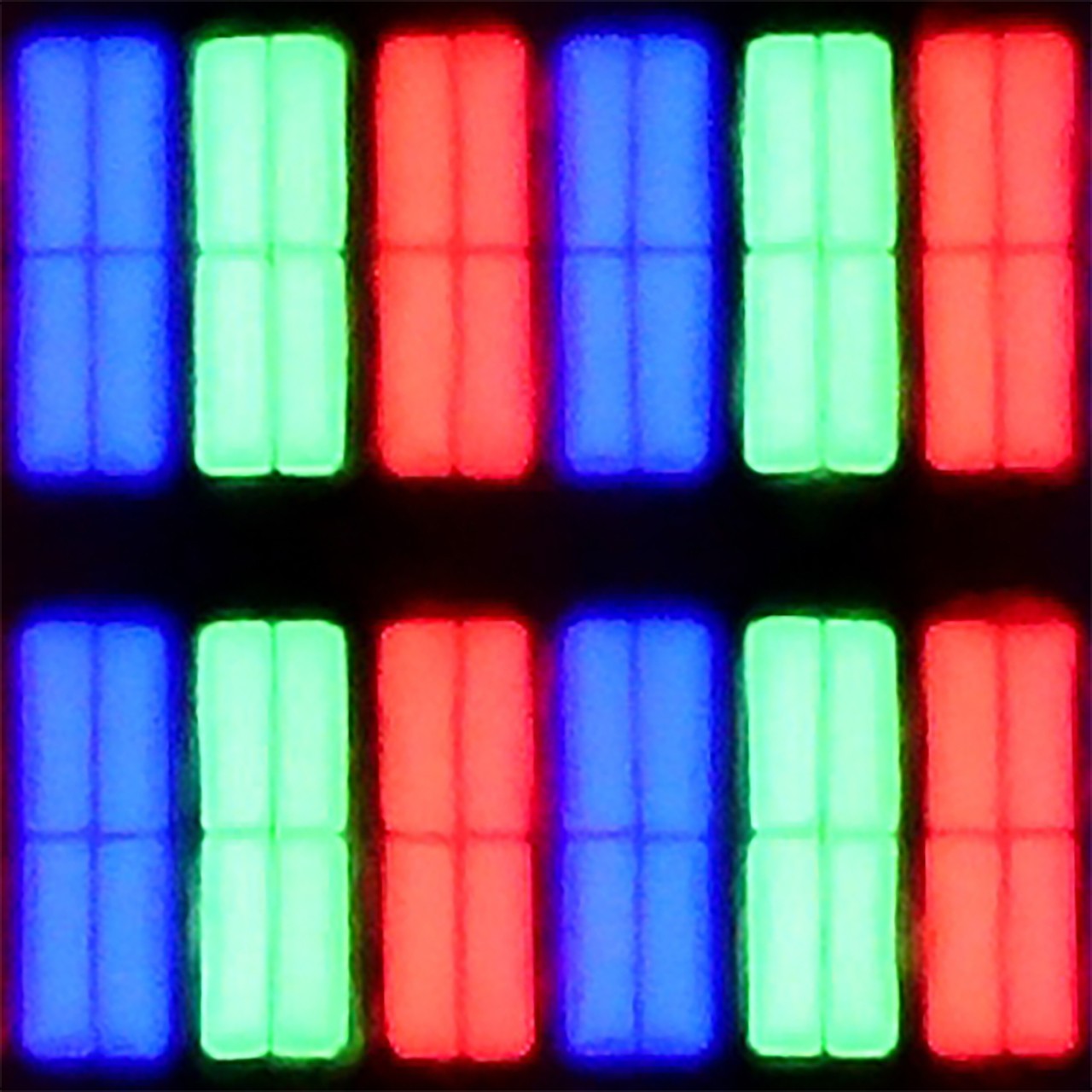
Panel uniformity and thermal imaging:


LG QNED87T6B
XIAOMI A PRO 2026
TV features
8.8/10
6.1/10
- HDMI inputs0 x HDMI 2.0, 4 x HDMI 2.1 48Gbps3 x HDMI 2.0, 0 x HDMI 2.1
- Other inputsRCA (Chinch)
- OutputsToslink (Optical audio), eARC (HDMI), ARC (HDMI)Toslink (Optical audio), eARC (HDMI), ARC (HDMI), Mini-Jack (Headphones)
- Network InterfacesWi-Fi 2.4GHz, Wi-Fi 5GHz, Ethernet (LAN) 100MbpsWi-Fi 2.4GHz, Wi-Fi 5GHz, Ethernet (LAN) 100Mbps
- TV receptionDVB-T, DVB-T2, DVB-S, DVB-S2, DVB-CDVB-T, DVB-T2, DVB-S, DVB-S2, DVB-C
Classic features:
- Recording to USB (terrestrial TV)
- Recording programming
- Picture in Picture (PiP)
- RF remote control (no need to aim at the screen)
- Backlit remote control
- Teletext
- Audio only mode
- Bluetooth headphones support
- Simultaneous Bluetooth headphones & TV audio
Smart features:
- AirPlay
- Screen mirroring (Windows Miracast)
- Voice search
- Voice search in native language
- Ability to connect a keyboard and mouse


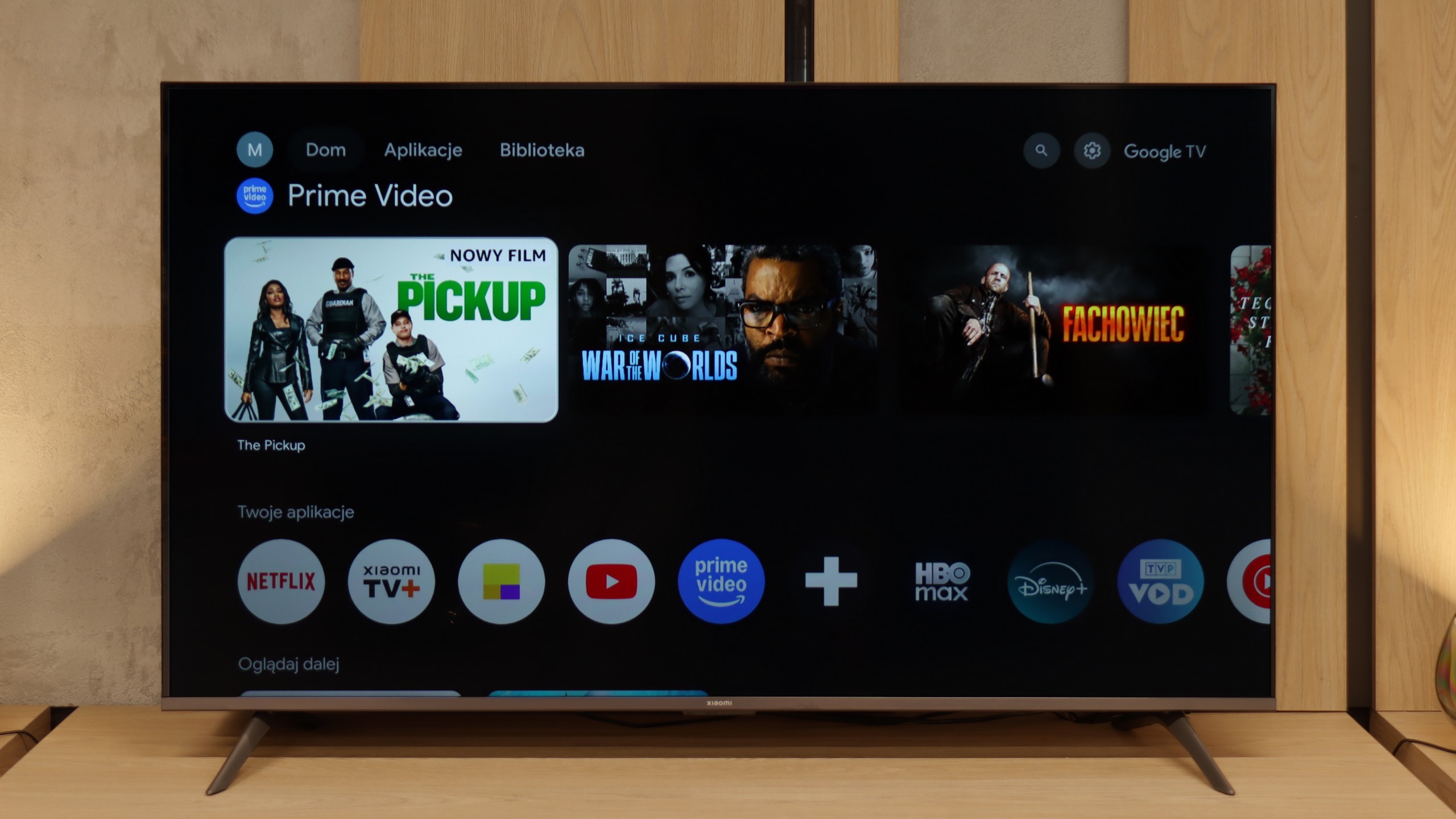
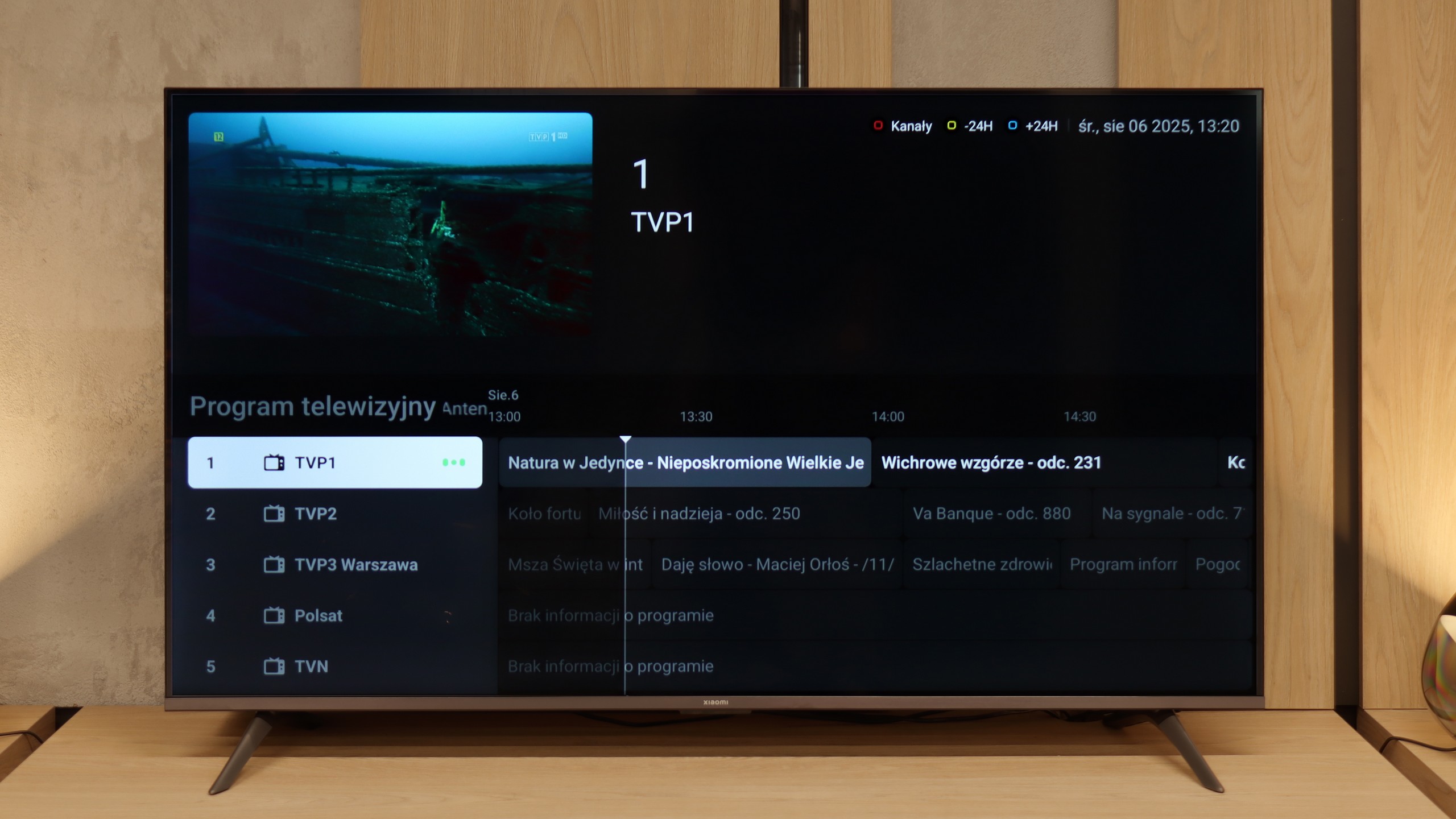
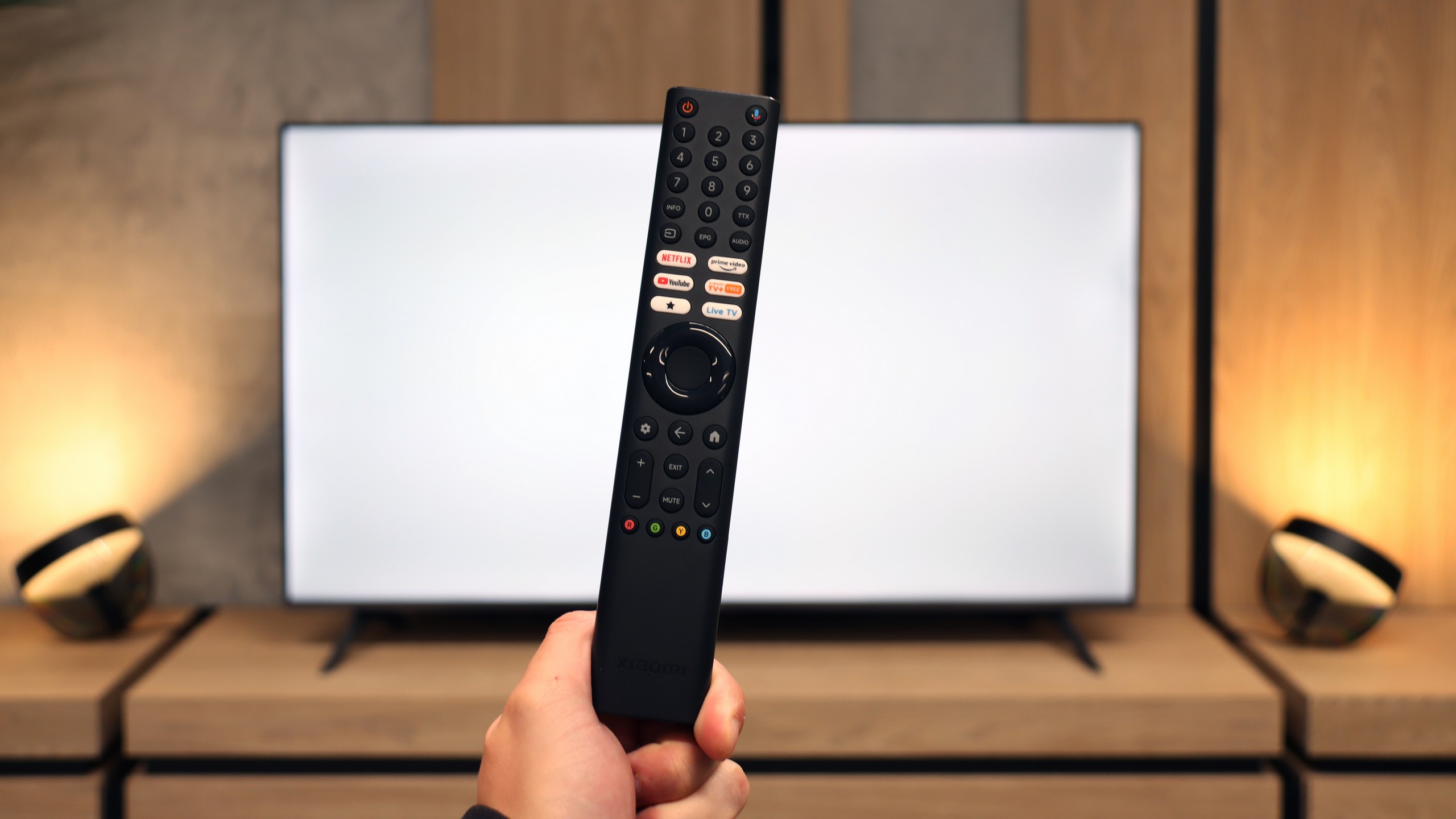
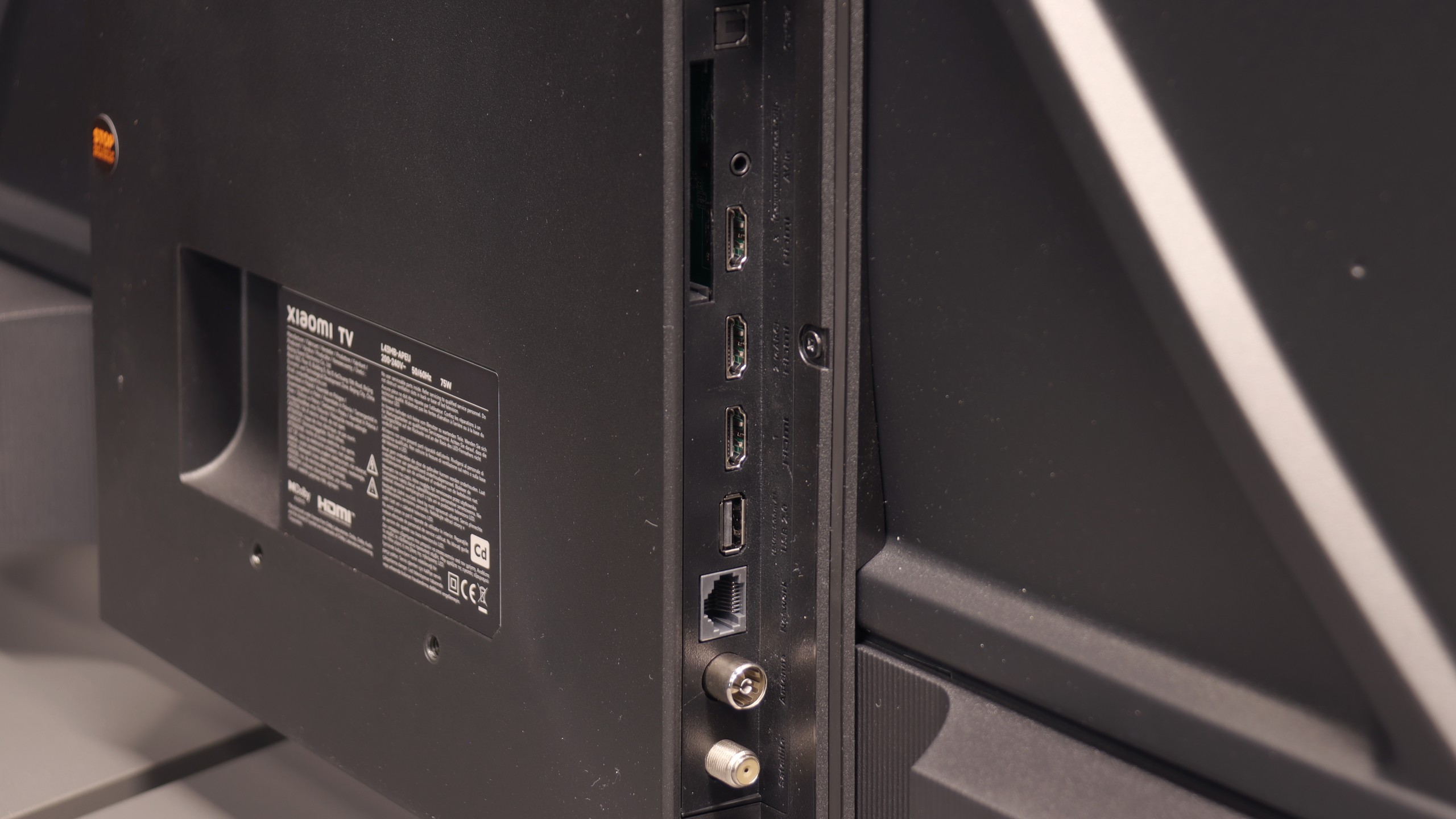
LG QNED87 Television offers a multitude of features that significantly enhance user comfort. Let's start with the WebOS system, which we believe has the most user-friendly interface among all televisions available on the market. One of its greatest assets is the remote control with an integrated gyroscope, known as the Magic Remote. Thanks to this, navigation is intuitive and fast, making the use of the television a pleasure. WebOS also supports a number of smart features that greatly simplify daily use of the television. Among them, we find AirPlay, which allows easy content streaming from Apple devices such as iPhone or iPad. Additionally, the television supports a wide range of streaming applications, such as Netflix, YouTube, Amazon Prime Video, and many others, providing access to favourite films and series in one place. When it comes to daily usage, LG QNED87 does not disappoint. The television offers a USB recording function, which is increasingly rare in today's models. This allows for recording favourite programmes and watching them at any time. Furthermore, the television has a PIP (Picture-in-Picture) function, although only for one tuner, enabling the viewing of two programmes simultaneously. Connecting additional devices via Bluetooth is simple and hassle-free. The television supports various Bluetooth devices, such as mice, keyboards, or headphones, increasing its versatility and allowing easy personalisation of the user experience. With all these features, the LG QNED87 television is a versatile and convenient device that meets the expectations of even the most demanding users.
SmartTV - Google TV
The biggest advantage of the Xiaomi A Pro 2026 is the Google TV system. It is what gives the television a second life – you can run practically any application on it, from Netflix and YouTube to music services and lesser-known programmes from the Google Play Store. We are not limited to what the manufacturer has pre-installed, as is the case with other budget televisions. Additionally, we have AirPlay, voice search via Google Assistant, and even integration with Gemini. We did encounter a few minor hiccups – for example, streaming from a laptop did not always want to work – but despite these shortcomings, Google TV is a huge plus in this setup.
Classic TV Functions
The Xiaomi A Pro 2026 can be termed a 'senior-friendly' television. The large remote control with a numerical keypad and a considerable number of physical buttons makes it intuitive to operate. Support for teletext and a clear EPG interface facilitate the use of classic television functions. We will not find many advanced features such as USB recording or the PiP function, but the presence of an analogue headphone jack output can be surprisingly practical for some users. It gives the impression of a set of features tailored to the needs of the most traditional viewers.
System Stability
However, not everything works as it should. During testing, we encountered irritating system lags, problems with Miracast, and issues when switching audio sources. There were even instances where it was necessary to reset the television by disconnecting it from the power supply. This simply shows that although Google TV offers huge possibilities, the stability in such a budget-friendly construct can still be quite problematic.
Playing files from USB
8.2/10
6.8/10
Supported photo formats:
Maximum photo resolution:

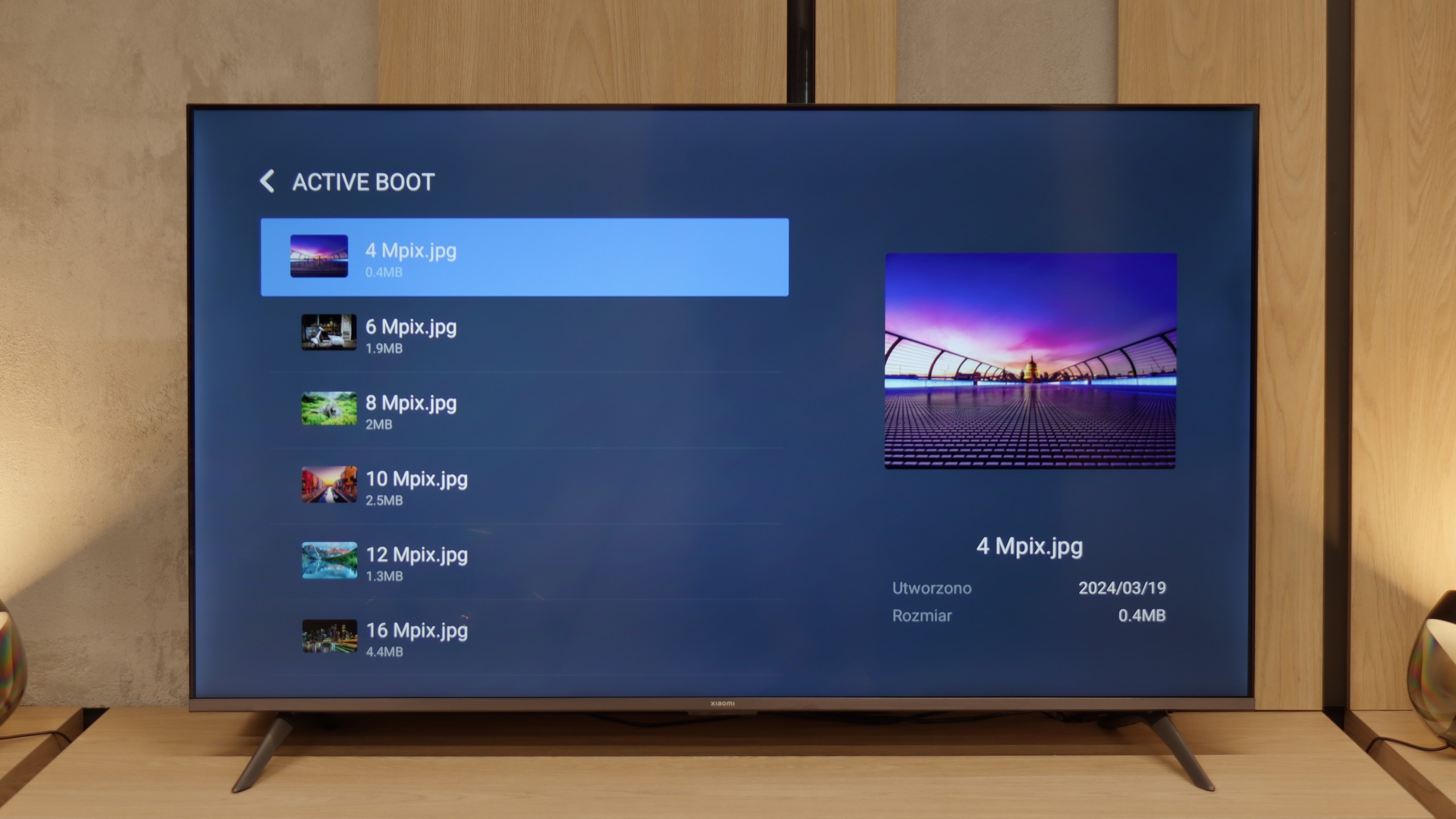
The built-in media player in the LG QNED87 television should not disappoint anyone. It offers rich capabilities when it comes to playing video and audio files. It supports many popular formats, providing versatility and user convenience. The only criticism that could be made is the limited number of supported image formats. However, this mainly concerns those less popular formats, so most users should be satisfied with the player's functionality. For everyday use and typical multimedia formats, the player performs very well.
The built-in media player in the Xiaomi A Pro 2026 is a real enigma. On one hand, it plays most popular audio and video formats without major issues. On the other hand, it can struggle with basic things like Polish characters. Files with letters such as ą, ł, ć or ś in their names often refuse to open or are displayed incorrectly. This looks strange, as we seemingly have codec support, yet the television simply gets lost on simple matters related to the alphabet. Fortunately, this is not a huge problem, as thanks to Google TV we can simply install another player, e.g. VLC. Then the issue with Polish characters disappears completely, and using multimedia becomes hassle-free.
Apps
8.3/10
9.6/10














































Sound
6/10
5/10
- Maximum volume-81dB
- Dolby Digital Plus 7.1
- Dolby True HD 7.1
- Dolby Atmos in Dolby Digital Plus (JOC)
- Dolby Atmos in Dolby True HD
- DTS:X in DTS-HD MA
- DTS-HD Master Audio
When it comes to sound, one could say it is moderately pleasant. There is a lack of pronounced bass, and the mid-tones seem somewhat unclean. This is not an ideal situation for audiophiles, but it is worth noting that the television has no trouble playing DTS files. This is a feature that is lacking in many other televisions, so the LG QNED87 deserves praise for this support.
Last year, the Xiaomi A Pro 2025 surprised us with really decent sound, considering it is a super budget television. Unfortunately, this year's edition – the A Pro 2026, has let us down across the board. The sound resembles the sensation of the equipment playing from underwater: flat, devoid of any bass or depth. The only upside remains the wide support for audio formats, such as Dolby Atmos or DTS:X, but in practice, it changes very little. If you are considering this television, you must immediately factor in a soundbar, as without it the audio experience will be quite disappointing.
Acoustic Measurements
No acoustic data
81dBC (Max)
75dBC


